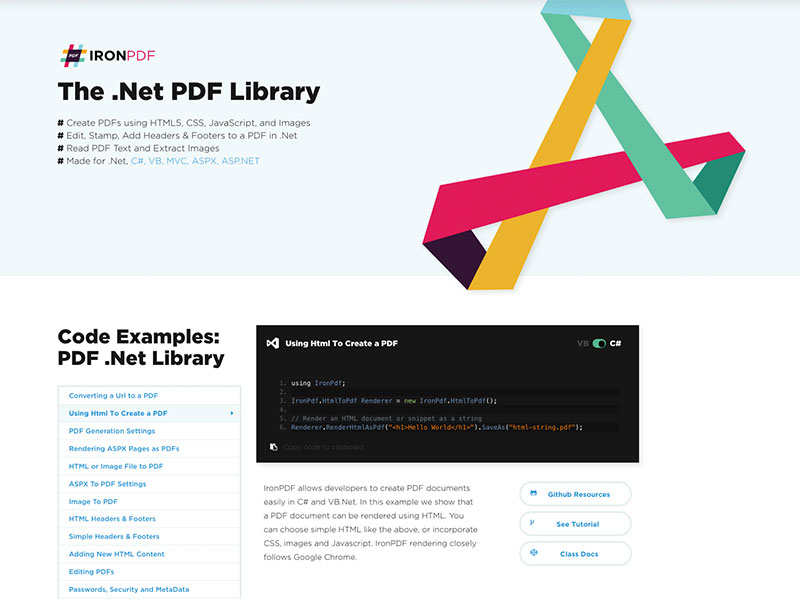Many developers find that the best way to develop a PDF in .NET is to use HTML, CSS, and images traditional web technologies as the design standard for their PDF documents. Iron PDF provides HTML to PDF technology using an underlying fully featured browser engine, faithfully reproducing that HTML document including its forms, layout, and design as a fully functional PDF document which can then be served or saved to the file system. IronPDF (https://ironpdf.com/technology/net-pdf-library/) can create PDFs from HTML strings, HTML documents including or not including assets, and URLs, using its advanced HTML to PDF technology. In addition, it can render any type of image to PDF, including SVG graphics. https://ironpdf.com/ fully supports all .NET Framework languages, including VB.NET and C#. This works equally in server applications, desktop applications, console applications, and in websites such as MVC and Windows Forms. Iron PDF is a commercial library. It is not open-source in itself; however, source code for all of our tutorials and many of our use cases can be found on GitHub.com. We are also available on the NuGet Package Manager for Visual Studio: https://www.nuget.org/packages/IronPdf/ Iron PDF excels in the ASP.NET environment by providing a PDF generator which can turn existing Windows Forms, MVC Views, or HTML assets directly to PDFs and extract content from existing PDF documents, or indeed edit uploaded PDF documents or PDF templates. Its API allows for deployment direct to Azure or to web hosts without any additional configuration or the use of C++ binaries, and most PDF generation and editing operations can be achieved in a single line of code. Iron PDF is perfect for use in a .NET application wherever you want a straightforward, platform-independent solution for rendering PDF documents, editing PDF documents, or working with existing PDF documents to extract their content such that they can be repurposed or put into a search index.

